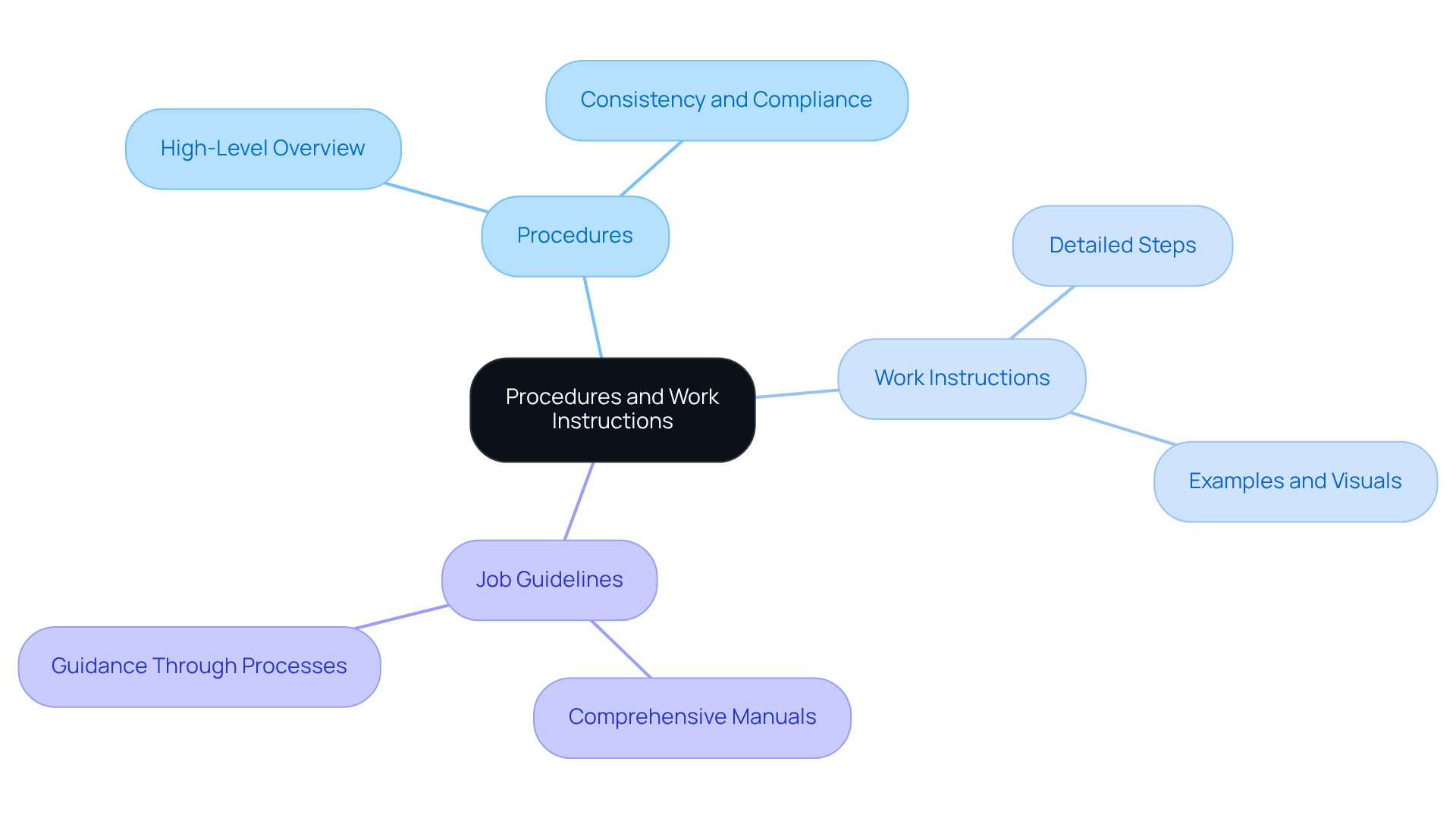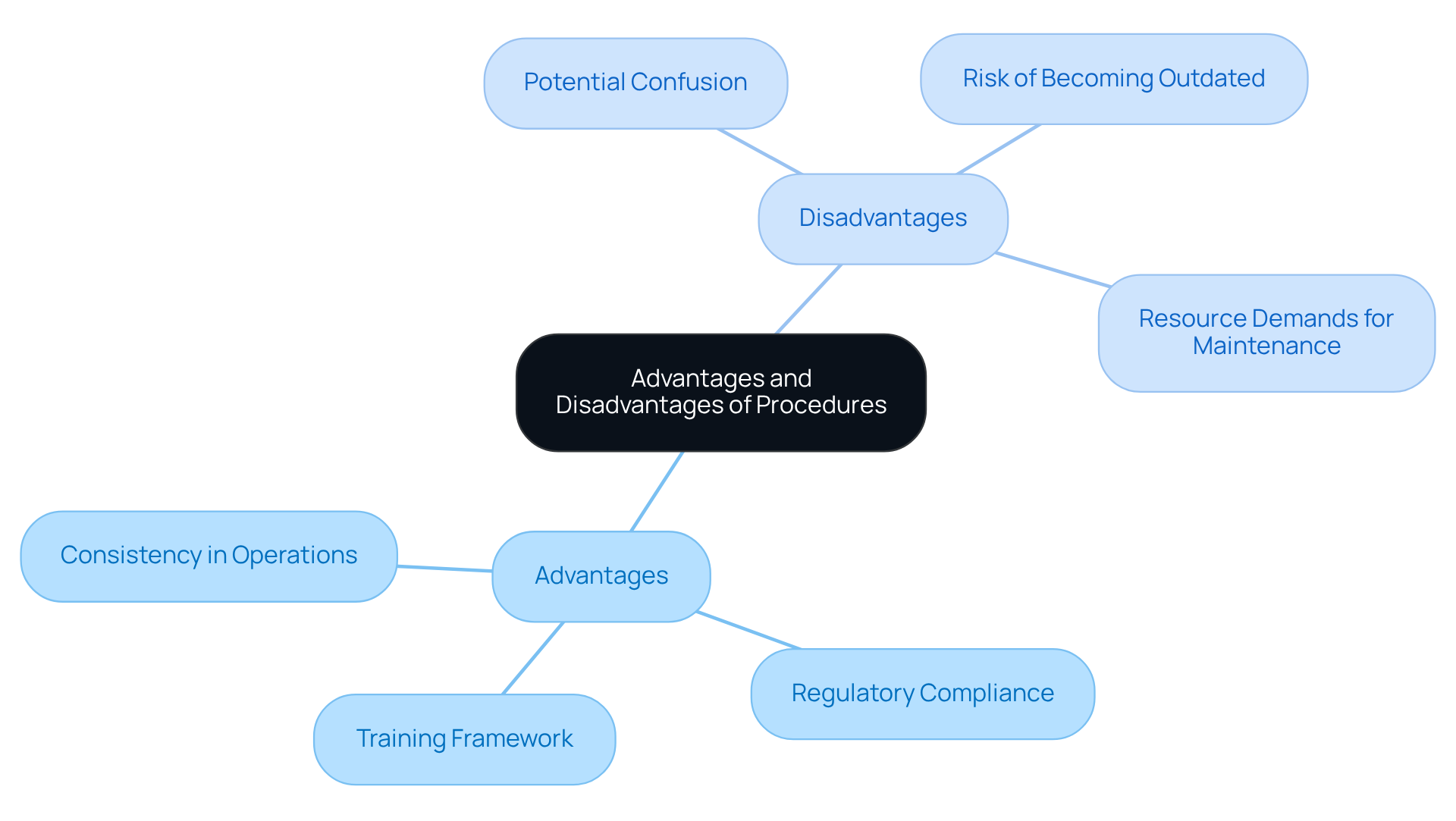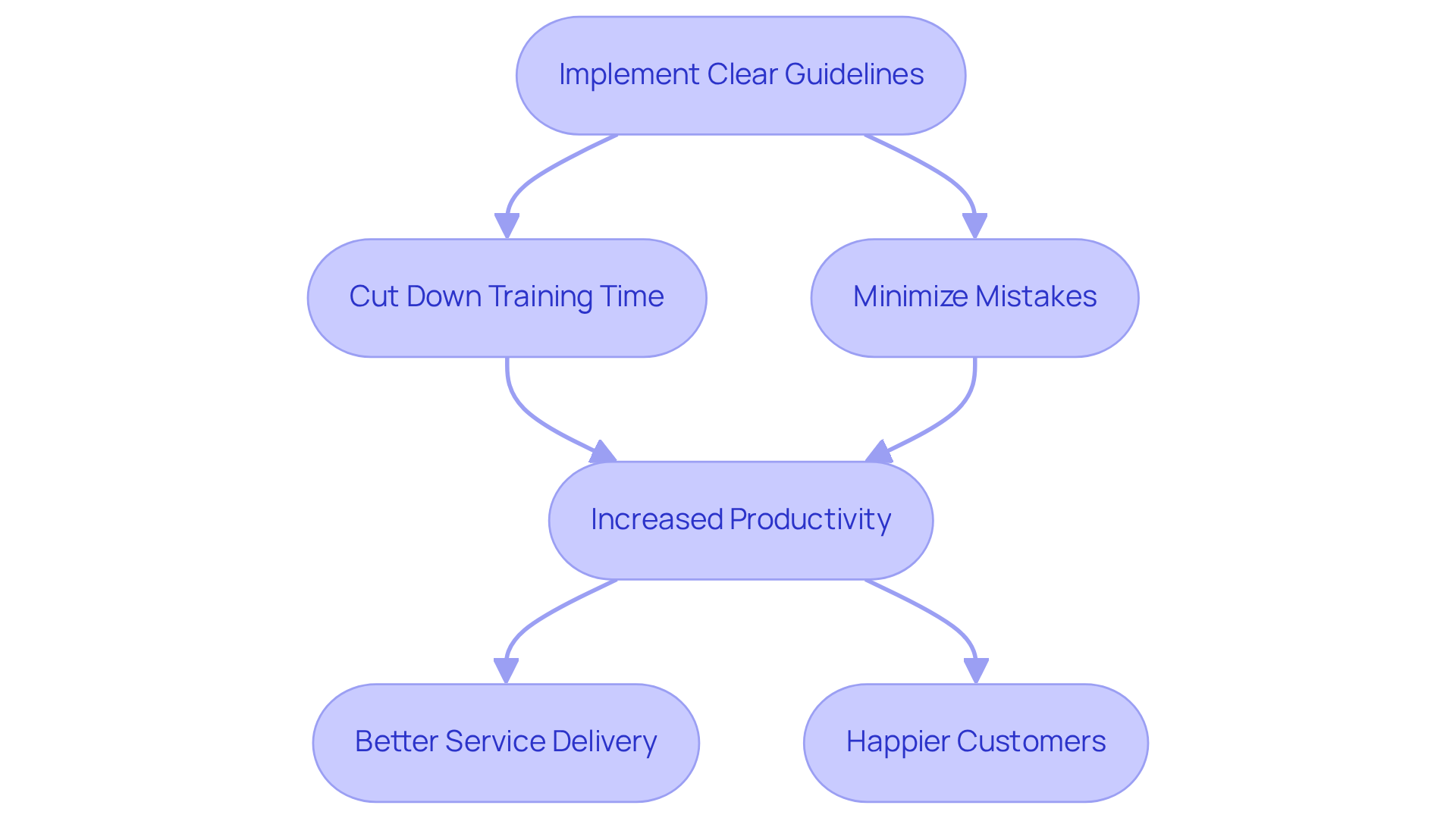
Remote Team Documentation Strategies
|
October 17, 2025
|
Procedure vs Work Instruction: Key Differences for Operations
Overview
You might be wondering what sets procedures apart from work instructions. Well, the key differences really come down to scope and detail. Procedures give you a high-level overview of processes, while work instructions dive into the nitty-gritty with specific, step-by-step guidance for tasks. It’s like having a roadmap versus a detailed GPS—both are useful, but they serve different purposes.
Now, let’s break it down a bit more. Procedures outline the 'what' and 'why' of processes, giving you the big picture. On the other hand, work instructions focus on the 'how.' This distinction is crucial for ensuring operational clarity and efficiency within organizations. Think of it this way: without clear instructions, you might find yourself lost in the details, and that can lead to confusion. So, understanding these differences can really help streamline your documentation efforts!
Key Highlights:
- Procedures provide a high-level overview of processes, while work instructions offer detailed, step-by-step guidance.
- Job guidelines include visuals and examples to assist in understanding specific activities.
- SowFlow's documentation solution simplifies the creation and updating of procedures and work instructions, enhancing relevance and accessibility.
- Procedures outline the 'what' and 'why' of processes, while work instructions focus on the 'how' for employees.
- Maintaining updated procedures and work instructions is crucial to prevent confusion and operational mistakes.
- Effective documentation reduces training time and errors, leading to enhanced productivity and customer satisfaction.
- SowFlow's features, such as screenshot integration, streamline the documentation process for teams.
Introduction
You might be wondering why it’s so important to understand the difference between procedures and work instructions. Well, for organizations aiming for operational excellence, this distinction is crucial! These formalized steps not only boost compliance and consistency but also act as key tools for training and onboarding new team members.
But here’s the catch: how do you effectively tell these two concepts apart?
- While procedures give you a high-level overview,
- work instructions dive into the nitty-gritty of task execution.
So, how can organizations navigate this complexity to ensure clarity and efficiency in their operations? Let’s explore this together!
Define Procedures and Work Instructions
You might be wondering what exactly the distinction is between procedure vs work instruction. Well, they’re formalized steps that explain the difference between procedure vs work instruction for carrying out specific activities or processes within an organization. Think of them as a high-level overview of the necessary actions, often documented in relation to procedure vs work instruction to keep things consistent and compliant. Now, let’s talk about job guidelines. These are thorough, step-by-step outlines that clarify how to perform particular activities within those processes. They dive deeper, often including visuals or examples to help you really get the hang of things.
With SowFlow's instant documentation solution, creating and updating these essential documents is a breeze. This means your teams can ensure everything stays relevant, even in our fast-paced business world. It streamlines process standardization and boosts onboarding and knowledge sharing, giving teams instant access to the documentation they need. It’s like having a trusty toolkit right at your fingertips!
Although protocols act as a roadmap, task guidelines serve as the comprehensive manual that differentiates between procedure vs work instruction, guiding users through each phase of the process. And guess what? SowFlow’s effective workflow sharing makes this even better. So, whether you’re new to the team or just brushing up on your skills, you’ll feel empowered and ready to tackle any challenge that comes your way.

Differentiate Roles and Functions in Operations
You might be wondering how the differences between procedure vs work instruction manifest in operations. Well, methods usually outline the 'what' and 'why' of a process, creating a framework for how activities should be approached. They're often the go-to for management to ensure compliance and standardization across teams. On the flip side, guidelines focus on the 'how,' providing the precise info employees need to perform their responsibilities accurately. This distinction between procedure vs work instruction is crucial; while methods guide overall strategy and adherence, task guidelines empower employees with the necessary details to perform their roles efficiently.
For instance, think about the differences between procedure vs work instruction when describing the steps for integrating a new employee. The operational guideline would then specify how to carry out each onboarding activity, like completing forms or setting up accounts. Now, let’s dive into how SowFlow is changing the game in creating these documents. Anastasia Masadi, a Product Owner, shares, "SowFlow has been a game changer in the manner we document tasks and deliver to our clients." Imagine not having to take each screenshot separately or even leaving your browser while creating SOPs and training materials. SowFlow has truly given me time back in my life!
This efficiency allows operations managers to focus on strategic tasks while ensuring their teams have the exact guidance they need. With features like seamless screenshot integration and in-browser document creation, SowFlow directly tackles the challenges of traditional documentation methods. It’s making it easier for teams to whip up high-quality SOPs and training materials. So, what are you waiting for? Let's explore how you can streamline your documentation process!

Evaluate Advantages and Disadvantages in Practice
You might be wondering why having procedures is so important. Well, they come with some great perks! For starters, they help ensure consistency in operations, keep you compliant with regulations, and provide a solid framework for training new employees. But here's the catch: if the distinction between procedure vs work instruction is too broad, it can lead to confusion—especially if there’s no detailed guidance to back them up.
Now, let’s talk about the differences between procedure vs work instruction. They’re fantastic for offering clarity and specificity, but don’t forget—they can become outdated pretty quickly if you don’t give them a regular check-up. Plus, creating and maintaining these guidelines takes effort, which can be tough for organizations with limited resources. Imagine a manufacturing firm that needs comprehensive task guidelines for quality control. Sure, they’re super helpful, but if those guidelines aren’t updated regularly, mistakes in production could sneak in. So, it’s all about finding that balance!

Assess Impact on Organizational Efficiency
You might be wondering how efficient methods and guidelines can really boost productivity in your organization. Well, it turns out that by cutting down on training time and minimizing mistakes, you can make a big difference! When your team has clear guidelines to follow and easy-to-understand instructions at their fingertips, they can tackle their tasks with a lot more confidence and accuracy. This not only speeds up onboarding but also ramps up productivity, reducing the need for those lengthy meetings where everyone tries to clarify what needs to be done.
Now, imagine a company that rolls out well-defined procedures vs work instruction alongside comprehensive work instructions. They might discover that their teams zip through projects faster and make fewer errors along the way. This can lead to better service delivery and happier customers. So, why not explore how implementing effective documentation could transform your workplace dynamics? It’s worth a thought!

Conclusion
You might be wondering about the difference between procedures and work instructions, right? Understanding this distinction is super important for running operations smoothly in any organization. Procedures give you the big picture, outlining the 'what' and 'why' of processes, while work instructions zoom in on the 'how,' providing detailed steps for getting specific tasks done. This clear separation not only helps with compliance and standardization but also gives employees the confidence to perform their roles accurately.
As we wrap up, let’s highlight a few key points:
- Well-defined procedures are your best friends for ensuring consistency and compliance.
- On the flip side, having comprehensive work instructions can really cut down on errors and speed up training.
- Tools like SowFlow can make documenting these resources a breeze, helping teams create and maintain them effortlessly.
So, in conclusion, putting procedures and work instructions into practice can really boost your organization’s efficiency and productivity. By making it a priority to create and regularly update these documents, you can streamline operations, reduce mistakes, and improve service delivery. Embracing these practices isn’t just about ticking boxes; it’s a smart move towards creating a more agile and responsive workplace. Now, how about exploring ways to implement these ideas in your own team?
Frequently Asked Questions
What is the difference between a procedure and a work instruction?
A procedure provides a high-level overview of the necessary actions to carry out specific activities within an organization, while a work instruction offers detailed, step-by-step guidelines on how to perform those activities.
What are job guidelines?
Job guidelines are thorough, step-by-step outlines that clarify how to perform particular activities within processes, often including visuals or examples to aid understanding.
How does SowFlow assist in creating documentation?
SowFlow offers an instant documentation solution that makes creating and updating essential documents easy, ensuring teams have relevant information quickly and streamlining process standardization.
What benefits does SowFlow provide for teams?
SowFlow boosts onboarding and knowledge sharing by giving teams instant access to documentation, which helps maintain relevance in a fast-paced business environment.
How do protocols and task guidelines differ?
Protocols act as a roadmap for processes, while task guidelines serve as a comprehensive manual that guides users through each phase of the process, differentiating between procedure and work instruction.
👍
What others are liking
5 Steps to outline your ideal documentation structure
5 MINS READ
Where to start the your journey of mapping out your ideal documentation structure, aligning it with the very heartbeat of your organization?
Defining a winning level of detail in your process
3 MINS READ
What is too much detail, and what is too little? This article described in that winning level detail about what detail is enough.





